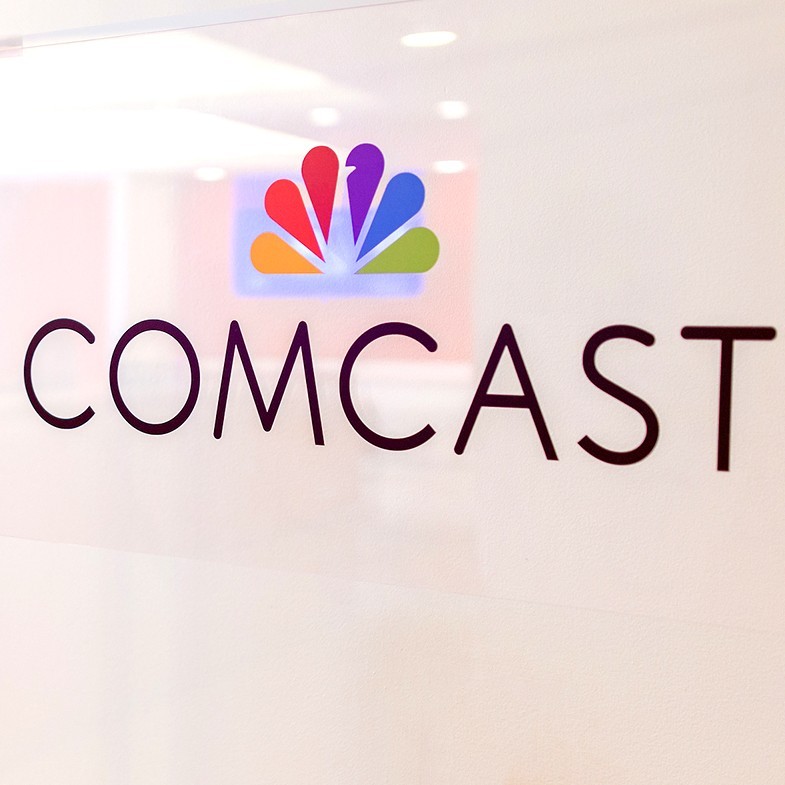Comcast turns to ARPU, not subs, as key broadband growth metric
Investing in the network is 'priority one,' says Comcast President Mike Cavanagh as the cable op squeaked out a small broadband subscriber gain alongside record mobile line additions in the third quarter of 2022.

As broadband subscriber growth continues to flatten out, Comcast is now viewing ARPU (average revenue per user) as the critical growth driver for its broadband business.
Comcast eked out a small gain of 14,000 broadband subscribers (including 10,000 residential subs) in the third quarter of 2022, well off the 300,000 gained in the year ago quarter. The company doesn't expect to see big subscriber gains in that category anytime soon.
But it does expect ARPU to play a primary growth role as Comcast prepares some major, speed-enhancing network upgrades and continues to use mobile to help it bring value to its core broadband offering. Comcast's broadband ARPU rose 3.7% in Q3, consistent with the growth rate it saw in the prior quarter.
Figure 1:  (Source: Comcast)
(Source: Comcast)
"We expect ARPU growth will continue to be the primary driver of our residential broadband revenue growth in the near term," Mike Cavanagh, Comcast's president and CFO, said on Thursday's Q3 2022 earnings call.
Company chairman and CEO Brian Roberts pointed to an overall cable growth story that hinges on four primary drivers: residential broadband units, residential broadband ARPU, wireless and business services.
"While we don't anticipate residential broadband units to be a significant driver for now, we expect to maintain healthy growth in the other three, leading to continued strong financial performance at cable for the foreseeable future," Roberts said.
An analyst on the call noted that he's getting some "pushback" from investors about the bigger focus on broadband ARPU growth. But that focus, paired with Comcast's Q3 results, apparently sat well with investors today – Comcast shares were up 7% in late-morning trading Thursday.
Update: Comcast didn't give any specific broadband subscriber guidance for Q4 2023, but not that it expects some losses to be logged in the wake of Hurricane Ian. Comcast is still working out how many homes in its Southwest Florida systems won't be turned on again as a result of the storm, but losses will be in the "tens of thousands," Cavanagh said.
Network investment is 'priority one'
Sticking with broadband, a category that's seeing increased competition from fiber and fixed wireless access providers, enhancing and upgrading Comcast's network is clearly on the front burner.
Comcast has sparked a plan to beef up capacity. As a precursor to DOCSIS 4.0, Comcast has started to deploy multi-gigabit download speeds along with faster upload speeds using a "mid-split" that allocates more spectrum to the upstream. Comcast expects to introduce that capability to 20% of its footprint by the end of 2023, and to hit most of its footprint with it by 2025.
Comcast believes it can pull this off without having to jack up the intensity of its cable capital spending.
"Priority one right now is to invest in the network," Cavanagh said. "We've got a great path to symmetrical, multi-gig through DOCSIS 4.0 in a reasonable timeframe at reasonable costs inside the envelope of about 11% capex intensity."
"One of our game plans is to always, consistently invest in the network. I think our network is one of our core strengths," Dave Watson, president and CEO of Comcast's cable unit, said. Comcast, he stressed, has a "great roadmap" that starts with mid-splits and then proceeds to DOCSIS 4.0.
Comcast, he reiterated, expects to push ahead with D4.0 in the second half of 2023, putting it on a path toward multi-gigabit, symmetrical speeds.
Though pushing fiber deeper into the network is part of Comcast's game plan, Watson is also convinced that the company's next-gen hybrid fiber/coax (HFC), which will be deployed across all markets and not just in pockets of its markets, will size up well against fiber-to-the-premises (FTTP) competition.
"In terms of the customer experience, in terms of multi-gig speeds that are symmetrical and the roadmap that we have, I don't really see a difference," he said.
Mobile sets another record
Xfinity Mobile, a service that Comcast offers to its broadband base, remained a bright spot. Comcast added a record 333,000 lines in Q3 2023, ending the quarter with 4.94 million. Comcast announced today that it has eclipsed 5 million mobile lines roughly five years after the service was launched nationwide.
Figure 2:  (Source: Comcast)
(Source: Comcast)
Comcast mobile revenues rose 30.8% to $798 million. Notably, those mobile revenues surpassed the $745 million in voice revenues posted in the quarter.
"We really like our trajectory in mobile," Watson said. "We like our capital-light approach and we like our position with what we're able to do competitively, how we surround broadband with mobile. We get to play offense and we get to package mobile with broadband services."
Comcast offloads most of its mobile traffic on to Wi-Fi, but continues to view offloading on CBRS spectrum and its 600MHz spectrum as a "good opportunity," Watson said, noting that Comcast and Charter Communications are working together on how to model out offloading traffic in high-use areas and what savings can result from that.
Comcast recently inked a deal with Samsung for 5G radios that will help Comcast offload mobile data in high-traffic areas.
Video focus shifts to the platform
Comcast shed another truckload of pay-TV subs in Q3 but is still bullish about its position in video as its strategy shifts to a streaming platform that can be monetized with subscription and ad-based services.
Comcast lost another 561,000 total video subs (including a loss of 540,000 residential subs) in the quarter, reducing that base to 16.58 million. Those pay-TV losses widened from a loss of 408,000 in the year-ago period.
"I anticipate the changing nature of video to continue," Watson said when asked to comment on the ongoing cord-cutting trend. "We've been able to manage through it," he added, citing broadband, business services and mobile among the company's primary growth drivers.
But, he added, Comcast also views "video as a broad platform opportunity." On that, he pointed to Xfinity Flex, the streaming device provided for free to all broadband-only subs, and the recently formed national streaming joint venture with Charter Communications that will include a focus on streaming devices and smart TVs.
Roberts acknowledged that many consumers no longer want the "big video package," so Comcast has adjusted to embrace that by integrating and aggregating streaming services from the likes of Netflix and Apple on its own platform.
Amid this "shift in video," Comcast "got to a place where we're somewhat indifferent to what the consumer prefers," Roberts added.
Related posts:
Comcast reaches 5M mobile lines in five years (press release)
— Jeff Baumgartner, Senior Editor, Light Reading
About the Author(s)
You May Also Like












